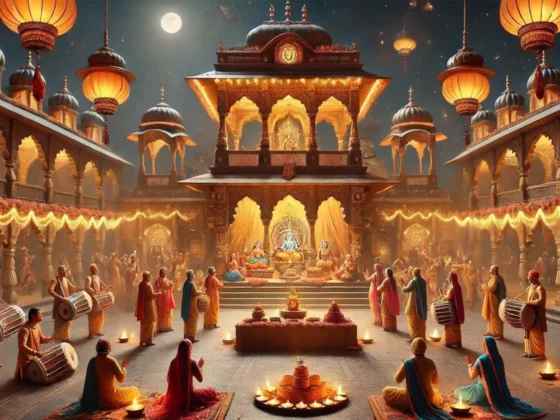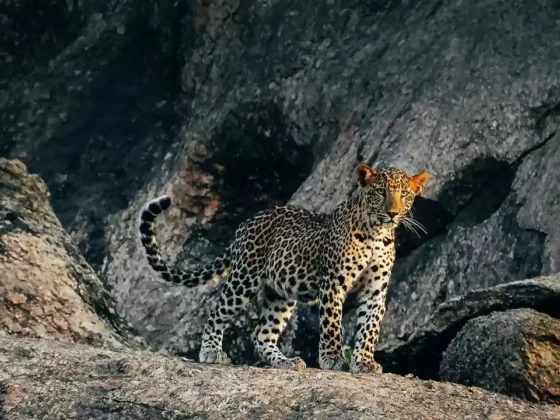Explore Bishnoi Village(blackbucks): A Unique Experience of Tribal Culture and Wildlife in Jodhpur
Bishnoi Village, located on the outskirts of Jodhpur, is an exceptional destination for those looking to experience tribal India’s rich culture and vibrant wildlife. This serene village, surrounded by vast Khejri tree groves, is home to the Bishnoi community, who are known for their strict vegetarian lifestyle and deep reverence for nature. Bishnoi Village offers a perfect blend of cultural heritage and natural beauty, making it a must-visit location for eco-tourists and wildlife enthusiasts alike.
A Journey into the Heart of Bishnoi Culture
The Bishnoi community is famous for its commitment to environmental conservation. They have a unique relationship with nature, worshiping the Khejri tree and the blackbuck. This tribe is deeply involved in protecting their environment, and many have even sacrificed their lives to prevent the destruction of their cherished wildlife and trees. Their belief in protecting all forms of nature makes Bishnoi Village a haven for eco-conscious travelers.
Wildlife Encounters Around Guda Bishnoi Lake
Bishnoi Village, especially around Guda Bishnoi Lake, offers an exceptional opportunity for wildlife enthusiasts to spot a variety of local and migratory birds. Domicile Cranes, Cattle Egrets, Cormorants, and Flamingoes are often seen around the lake, making it an ideal spot for birdwatching. Visitors may also be fortunate enough to see blackbucks and chinkaras on the fringes of the surrounding forests.
Ajit Bhawan Palace: A Luxurious Retreat in Jodhpur
A stay at Ajit Bhawan Palace, located in Jodhpur, offers the perfect blend of luxury and nature. This heritage resort is surrounded by tranquil landscapes and Khejri tree groves. It is also located near Guda Bishnoi Lake, making it an ideal base for wildlife spotting and birdwatching. The resort’s peaceful ambiance, combined with its royal heritage, provides a perfect retreat for those looking to immerse themselves in the culture and serenity of Rajasthan.
Luxury Accommodations and Heritage Experience at Ajit Bhawan
Ajit Bhawan, named after Maharadhiraj Sir Ajit Singhji, offers a unique stay in vintage suites, deluxe rooms, and luxury tents. Each villa is uniquely designed, making every stay a personal and artistic experience. The resort blends royal heritage with modern amenities, ensuring guests have a comfortable stay with unmatched hospitality. Guests can explore nearby attractions such as Mehrangarh Fort while enjoying the luxury of a heritage property.
Trekking and Wildlife Safaris in Guda Forests
For nature lovers and adventure seekers, Ajit Bhawan offers several trekking trails in the Guda forests. These trails lead to rust-colored lakes, desert caves, and sandstone cliffs. The treks vary in difficulty and provide opportunities to spot wildlife like chinkaras, barking deer, and blackbucks. Visitors can also take part in wildlife safaris around Bishnoi villages, where blackbucks and chinkaras are often spotted early in the morning.
A Scenic Safari Through the Wilderness of Jodhpur
The drive through the forests surrounding Jodhpur is an adventure in itself. With the Khejri groves lining the roads, the terrain is rugged, but the wildlife sightings make the journey worthwhile. Chinkaras, peacocks, and blackbucks can be seen during the safari, but it requires patience and timing to get a glimpse of these elusive creatures. A safari through these forests offers a truly immersive experience in the wilderness of Rajasthan.
Ajit Bhawan: An Artistic Escape with a Soothing Ambiance
The design of Ajit Bhawan is a masterpiece in itself. Every suite is individually crafted, offering a unique and artistic experience. The resort’s calming atmosphere, with its natural sounds and peaceful surroundings, helps guests relax and connect with nature. A visit to the water fountains or a trek through the forest can bring a sense of tranquility, perfect for those seeking a peaceful retreat.
How to Reach Bishnoi Village and Jodhpur
Reaching Bishnoi Village and Jodhpur is easy, with several travel options available. The nearest international airport is in New Delhi, which connects to Jodhpur by direct flights. Alternatively, travelers can drive or take a train from New Delhi to Jodhpur. Upon arrival, Ajit Bhawan offers vintage car transfers, providing guests with a luxurious and scenic ride to the resort.
Traditional Rajasthani Cuisine at Ajit Bhawan
Ajit Bhawan’s village-themed restaurant, Dhani, offers a selection of traditional Rajasthani delicacies. Guests can enjoy dishes like Ker Sangri (desert beans) and Bajra Roti, cooked in an earthen oven. For those with dietary restrictions, the resort offers vegan options and fresh fruit juices. The restaurant ensures that every guest’s culinary preferences are met, providing an authentic and delicious dining experience.
Where to Stay in Jodhpur: Ajit Bhawan Luxury Resort
Ajit Bhawan is a luxury resort offering an unforgettable stay in Jodhpur. The resort has a variety of accommodations, including Deluxe Rooms, Luxury Tents, and Vintage Suites. Prices range from Rs. 23,000 to Rs. 76,000, including all taxes and breakfast. The resort offers an all-inclusive experience, with luxurious amenities and exceptional service. Whether traveling for business or leisure, Ajit Bhawan ensures a memorable stay for both Indian and international guests.
Best Time to Visit Jodhpur and Bishnoi Village
The best time to visit Jodhpur and Bishnoi Village is between October and March, when the weather is cool and pleasant. March offers a wonderful experience with slightly warm afternoons and cool evenings. Visitors looking to witness the vibrant culture of Rajasthan should plan their visit during Holi, when the region comes alive with colorful celebrations.
Conclusion: Experience the Magic of Bishnoi Village and Jodhpur
Discover Bishnoi Village: A Unique Wildlife and Cultural Experience in Jodhpur
Located just outside Jodhpur, Bishnoi Village is a must-visit destination for anyone looking to experience the rich cultural heritage and diverse wildlife of tribal India. Known for its commitment to environmental conservation, the village is home to the Bishnoi community, who are strict vegetarians and protectors of nature, especially the revered Khejri tree and the blackbuck. Whether you’re a wildlife enthusiast or cultural explorer, Bishnoi Village offers a one-of-a-kind adventure into Rajasthan’s vibrant tribal life.
Immerse Yourself in the Rich Culture of the Bishnoi Tribe
The Bishnoi tribe, renowned for their deep respect for nature, has dedicated their lives to preserving the environment. The villagers worship Khejri trees and blackbucks, and many have made the ultimate sacrifice to protect these species. Their unwavering commitment to environmental conservation makes Bishnoi Village an ideal destination for eco-conscious travelers seeking to witness a community that lives in harmony with nature.
Wildlife Safari Around Guda Bishnoi Lake: A Birdwatcher’s Paradise
Guda Bishnoi Lake, located near Bishnoi Village, is a haven for birdwatchers and wildlife enthusiasts. Migratory birds such as the Domicile Cranes, Cattle Egrets, and Flamingoes can be spotted here, especially in winter when they flock to the area. Additionally, the lake’s serene surroundings offer a perfect opportunity to observe blackbucks, chinkaras, and other wildlife in their natural habitat.
Ajit Bhawan Palace: A Luxurious Retreat in Jodhpur
Ajit Bhawan Palace, located in the heart of Jodhpur, provides a luxurious base for travelers visiting Bishnoi Village. The resort, surrounded by the beauty of Khejri groves, blends royal heritage with modern amenities. The palace is also conveniently located near Guda Bishnoi Lake, allowing guests to easily explore the region’s wildlife and natural beauty. For those seeking a peaceful retreat, Ajit Bhawan offers a tranquil ambiance, ideal for unwinding after a day of exploration.
Stay in Luxury and Comfort at Ajit Bhawan Palace
Ajit Bhawan, named after Maharadhiraj Sir Ajit Singhji, is one of Jodhpur’s most prestigious heritage hotels. Guests can choose from a range of accommodations, including deluxe rooms, vintage suites, and luxury tents. Each suite is uniquely designed, offering an artistic and personal experience. The resort offers an exceptional combination of regal elegance and modern comfort, with flawless hospitality ensuring every guest feels at home.
Trekking and Exploring Wildlife in the Guda Forests
For those looking to combine adventure with nature, Ajit Bhawan offers trekking opportunities in the Guda forests. These trails lead through breathtaking landscapes, including rust-colored lakes and sandstone cliffs. Wildlife such as chinkaras, barking deer, and blackbucks can be spotted along the way. A visit to Bishnoi Village provides a chance to witness these animals up close while enjoying the peaceful beauty of the desert forest.
A Scenic Safari Through Jodhpur’s Wilderness
A safari through the forests surrounding Jodhpur is a thrilling way to spot wildlife in their natural habitat. The terrain, lined with Khejri trees, is rugged and challenging, but the rewards are worth it. Blackbucks, chinkaras, and peacocks are commonly seen during early morning safaris. Patience and timing are key to spotting the elusive blackbucks, but with perseverance, you’ll be treated to close-up encounters with these graceful creatures.
Ajit Bhawan: A Tranquil Escape into Nature’s Embrace
Ajit Bhawan offers an immersive escape for those seeking serenity and peace. The resort’s calming ambiance, accompanied by the sounds of nature, helps guests unwind and reconnect with the environment. The tranquil surroundings of the resort, including its water fountains and peaceful forest trails, provide the perfect setting for relaxation and reflection.
How to Reach Bishnoi Village and Jodhpur
Reaching Bishnoi Village and Jodhpur is simple, with multiple transportation options available. Jodhpur is well-connected by air, with direct flights from major cities such as Mumbai and New Delhi. Visitors can also travel by train or bus from New Delhi. Upon arrival, Ajit Bhawan offers chauffeur-driven vintage car transfers for a luxurious and scenic ride to the resort.
Savor Traditional Rajasthani Delicacies at Ajit Bhawan
Ajit Bhawan’s village-themed restaurant, Dhani, offers an authentic taste of Rajasthan with traditional dishes cooked on an earthen oven. Guests can enjoy regional specialties such as Ker Sangri (desert beans) and Bajra Roti. Vegan and gluten-free options are also available, ensuring that every guest can enjoy a meal tailored to their dietary preferences.
Where to Stay in Jodhpur: Ajit Bhawan’s Luxurious Suites
Ajit Bhawan offers a range of luxury accommodations in Jodhpur, including deluxe rooms, vintage suites, and luxury tents. The prices start at Rs. 23,000 per night for deluxe rooms, with vintage suites priced at Rs. 52,000 and the Ajit Suite available for Rs. 76,000. All rooms include breakfast and taxes. Whether traveling for leisure or business, Ajit Bhawan ensures a memorable stay with world-class service and facilities.
Best Time to Visit Jodhpur and Bishnoi Village
The ideal time to visit Jodhpur and Bishnoi Village is from October to March, when the weather is cool and comfortable. March, in particular, offers a pleasant climate with cool nights and warm afternoons. For those seeking to experience the vibrant colors of Rajasthan, visiting during Holi is a great opportunity to witness the region’s lively celebrations.
Conclusion: Experience the Magic of Bishnoi Village and Jodhpur
Bishnoi Village and Jodhpur offer an unforgettable blend of culture, wildlife, and luxury. From the serene beauty of Guda Bishnoi Lake to the majestic accommodations at Ajit Bhawan Palace, visitors can explore the heart of Rajasthan’s tribal life and natural wonders. Whether you’re a wildlife enthusiast, a cultural traveler, or simply seeking relaxation in a royal setting, Bishnoi Village and Jodhpur will leave you with lasting memories of adventure and tranquility.
4o mini
4o mini








